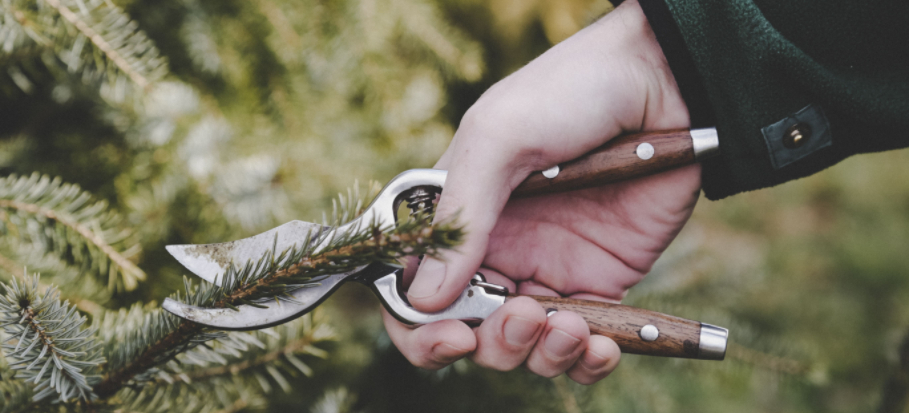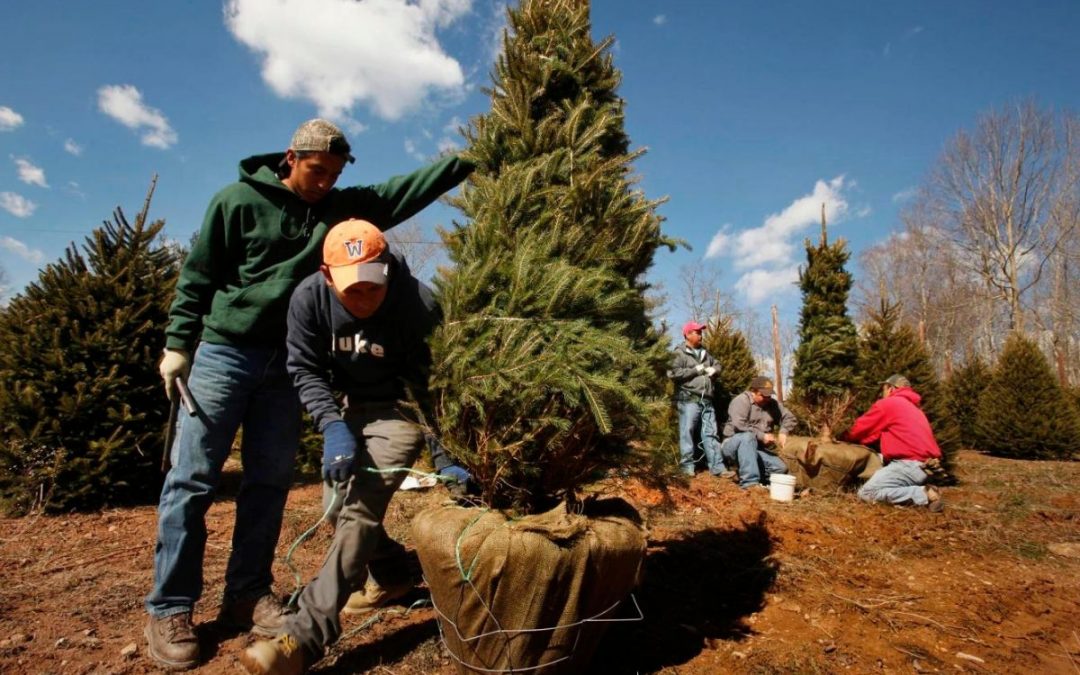Pruning a Christmas tree is an important part of maintaining its appearance. It removes upward-growing branches and wayward shoots. It also maintains a uniform shape all over. Dead and damaged shoots should also be removed. It is important not to prune back more than one year’s growth. This is because new growth will not emerge from old wood.
Table of Contents
What is the best time to prune a Christmas tree?
Pruning a Christmas tree is a necessary task to maintain the shape and health of your tree. It involves breaking off upward growing shoots and removing old or damaged shoots to create a more even shape throughout. Pruning your Christmas tree can be done anytime of the year, but the best time to prune is during the early spring or summer.
The first step in pruning a Christmas tree is to ensure that it is still young. If you are planning to use the tree for decorating your home, wait until it is at least six to eight feet tall. During this time, the tree’s growth rate will slow down. Moreover, this procedure will prevent decay and damage to the tree.
Alternatively, you can hire a tree surgeon to trim your tree for you. These professionals will use specialised equipment and know how to deal with even the tallest trees. A Christmas tree pruning service is an excellent option for those who are too busy to take on the task.
How to prune a Christmas tree
Pruning a Christmas tree is a simple process once you get the hang of it. There are a few important things to remember. First of all, never cut directly into the collar or trunk of the tree. This can lead to damaging the natural defences of the tree and could result in infection. Second, you should cut the tree at a 45-degree angle. This will prevent water from collecting on the cut surface, which can promote the growth of diseases.
Pruning is important not only for appearance but also for your tree’s health. If you cut too much off the tree, you’ll end up with open wounds that will attract bacteria. Use pruning shears or loppers to make the cuts. If you don’t have these tools, you can also use an electric chainsaw. If you cut the tree down by hand, make sure you cut it at an angle.
Another important aspect of pruning is to remove any dead, discolored, or overly dry branches. If you notice a lot of dead branches, it may not be the right tree for your home. If you’re not sure, try shaking the tree to see if any of the branches are dry. If so, the needles should fall off easily. If you’re working with a pine tree, you don’t want to risk snapping the needles as you go. After you’ve removed any dead or dying branches, you can start pruning the rest of the tree.

Will trimming a Christmas tree kill it?
When it comes to trimming a Christmas tree, it’s important to be as gentle as possible. Leaving open wounds from pruning can expose the tree to frost and diseases. When cutting the top of an evergreen tree, for example, you’ll create a huge pruning wound that can easily become a breeding ground for bacteria and fungi. It’s also best to avoid cutting conifers, which do not regrow branches from pruning points.
Trimming a Christmas tree can be an effective way to make it look more appealing. It can also help you determine its exact size. But interior designer Lauren Makk says it’s important to be gentle and fluff each branch individually. Also, remember to cut back upward-stretching stems, which can compete with the main “leader” branch. This will keep the focus on the main branch.
Does pruning seem like too much work?
Pruning your Christmas tree is actually quite easy once you get the hang of it. This task involves taking off upward-growing shoots and pruning away wayward ones to maintain a healthy shape. It is also important to cut off any dead or damaged branches. While pruning an evergreen tree is possible at any time of year, it is recommended to prune in the early spring and summer.
The best time to prune your Christmas tree is outside of its growing season, from January through March. You should avoid cutting the tree too close to the trunk to avoid damaging the natural defenses. Also, cut it at a 45-degree angle to avoid water collecting on the cut surface, which will promote the development of diseases. If you don’t feel comfortable with pruning, you can hire a professional to help you. The process may take some time, especially if you don’t have the right tools.
If you’re not sure whether pruning is right for you, check your tree and remove any dead or dying needles. Also, check for leftover decorations and fill up any gaps between the branches.

Tips for cutting your own christmas tree
There are some tips you need to follow when cutting your own Christmas tree. For instance, make sure that you have a vehicle that is large enough to accommodate the tree. You should also bring a tape measure and your favorite saw to make sure you get the right size tree. Also, make sure you have tie-downs to secure the tree to your car.
Before cutting the tree, it’s essential that you check whether any permits are required. If you’re not sure, contact the US Forest Service. If you can, choose a tree farm with saws available for customer use. If not, bring your own hand saw. This way, you’ll save yourself the hassle of buying a saw. Lastly, be sure to have someone to help you carry the tree.
After choosing the right type of tree, you should measure the area where you will display the tree. You should also measure the size of the tree stand. This way, you can know the height of the tree. This way, you won’t have to worry about it being too large or too small.
What’s the important on cutting your own tree
If you’re planning to cut your own Christmas tree this year, you may want to get a permit from the US Forest Service. The US Forest Service has rules about what types of trees are allowed to be cut, as well as how big they can be. In some locations, you can cut down a tree without a permit, but it’s best to check the regulations in your area before cutting your own.
If you are planning to cut your own Christmas tree, it’s important to choose a tree with supple needles. This will prevent it from dropping needles and ensure that the tree is fresh. However, you should also make sure that the tree is healthy and doesn’t have dead needles on the inner branches. Different farms have different rules about cutting down a Christmas tree, and you may have to allow the staff to cut it down for safety reasons. Generally, most farms will provide a saw for customers to use.
Cutting your own Christmas tree is a great way to give back to the environment and save money. Cutting your own tree can also help the tree last longer and stay green. Using real trees also helps the environment by reducing emissions and slowing climate change. Not only does cutting your own tree save money, but it creates a tradition for the entire family.
Benefits of a real tree
A real Christmas tree has many benefits for you and your family. Besides providing beauty to your home, a real tree can boost your mental and physical health. It can improve your immune system and reduce anxiety. It can also boost your productivity and happiness. For the past 25 years, Raley has brought home a live tree to celebrate the holiday season with her family. Since then, her children have continued the tradition.
Real Christmas trees are also environmentally friendly, reducing the amount of waste dumped into landfills. Since they are biodegradable, they can be composted or used for fuel. Furthermore, they are great for wildlife habitat. Furthermore, they can grow in areas where other trees cannot. The Virginia pine is one such tree, which is the preferred tree of Fred Raley.
Real Christmas trees are biodegradable, which means they can be used for mulch or for other purposes. In addition, real trees are recyclable, so when you’re done using them, you can reuse them as mulch. For more information about growing a Christmas tree, visit the Michigan State University Extension site.
Conclusion
Pruning a Christmas tree requires some special care. While there are many different methods, the basic principles are similar. Shearing a tree properly will stimulate new buds, put additional growth on the desirable branches, and control foliage and shape. The result will be a healthy, dense Christmas tree.
For evergreen trees, pruning in late summer and autumn is ideal. This allows the tree to heal after the cut and encourage new growth. Pruning in the winter, however, can leave a big wound that can be damaged by frost or infection. It is also not advisable to prune conifers in winter, as they will not regrow any branches from the cut points.

